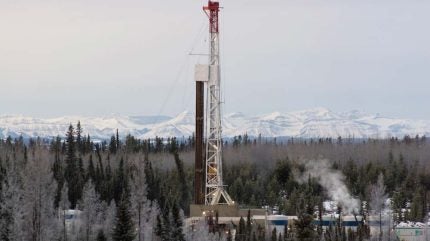
With the global energy mix shifting toward renewables, the question of reliable access to power continues to arise. The role of oil and gas remains critical for grid stability, and Alberta in Canada is proving how the sector can both meet power needs and be compatible with decarbonisation efforts.
While renewable installations are growing, they are not yet sufficient to meet global energy demands. There also remain challenges with energy storage and predictable supply from intermittent sources such as solar and wind.
Furthermore, the importance of petroleum products is not diminishing and is predicted to remain essential for the global economy over the next few decades. According to the International Energy Agency (IEA), global oil production is projected to rise by 3.1 million barrels per day (Mb/d) this year, then increase again by 2.5Mb/d in 2026 to reach 108.7Mb/d[i] (data as of November 2025). This growth comes even while refinery activity and stocks fluctuate, and prices react to geopolitical and market pressures.
As global oil and gas demand continues to rise, the industry faces a challenge to decarbonise. Alberta’s aspiration to achieving carbon neutrality by 2050 sets a powerful example of how the oil and gas industry can adapt and thrive in a changing energy landscape.
Alberta has a growing portfolio of renewables that is contributing to grid demand, and the province does not shy away from the continued importance of oil and gas in the energy transition. The strategy of addition not replacement is enacted well in the province. The technical know‑how and regulatory framework in Alberta are helping to drive down emissions, while the practical measures such as a prominent presence in the carbon capture, utilisation, and storage (CCUS) sector, underpin the province’s ambition to deliver a carbon‑neutral oil and gas sector by 2050.
Alberta proved something the world is still wrestling with. A reliable grid cannot be built without steady energy beneath it.
“Oil and gas are integral in keeping the province powered while renewables scale,” says Invest Alberta CEO, Rick Christaanse. “Natural gas, in particular, cleared the path for the transition off coal faster than anyone expected, with coal fully phased out in 2024, six years earlier than planned.”
Alberta’s oil and gas industry includes geoscientists, geologists, engineers of all kinds, operations specialists, project managers and other disciplines, all of whom have transferable knowledge and skills critical for producing clean energy in the future.
Can oil and gas be compatible with net-zero goals?
Alberta stands at the forefront of Canada’s oil and gas sector with more than 18,000 gas plants, 26,000 oil facilities, and hundreds of thousands of wells – a large share currently producing. As of 2024, the province produces 59.7% of the country’s natural gas and acts as a major hub for the oil and gas industry. The province has also been proactive in setting targets and implementing measures to reduce greenhouse gas emissions. Along with ending the uses of coal, Alberta has been targeting reductions in methane – which is a significant contributor to climate change.
Through initiatives such as the Pathways Alliance[ii], Alberta’s oil and gas companies have committed substantial investments towards achieving net-zero. This alliance includes major oil sands producers and aims to leverage technological advances in CCUS.
In addition, Alberta’s cleantech ecosystem is positioned to support these ambitions by fostering innovation in emissions reduction technologies. The province has invested in programmes that encourage the development and deployment of clean technologies. These include the establishment of funds such as Emissions Reduction Alberta[iii], which supports projects that lower emissions and enhance economic growth.
Furthermore, Alberta’s strategy involves enhancing the regulatory environment to facilitate the adoption of clean technologies and streamline processes for industry players. By creating a supportive business environment, Alberta aims to attract investments in the sectors such as CCUS that are driving the transition towards a sustainable future. One notable example is in direct air capture technology such as the Deep Sky Alpha facility in central Alberta.
Why CCUS is vital to a carbon-neutral oil and gas industry
CCUS is critical for the future of the oil and gas industry, especially in Alberta. CCUS technologies prevent CO2 emissions from industrial sources entering the atmosphere by capturing gases at source and either reusing it or storing it deep underground.
Christiaanse emphasises that Alberta brings both experience and momentum to CCUS. “CCUS turns a tough challenge into real progress. Alberta has ten years of results to point to, and millions of tonnes of CO2 already stored,” he says. “We can pull emissions from oil productions, refining, and natural gas power plants, then secure them deep underground in formations designed to hold them. We can even move into net negative fuels with renewable natural gas that flows straight into Alberta’s systems.”
Another major advantage Alberta has for CCUS is in its geology, matched by the essential regulations required to deliver progress. “Few places match Alberta’s combination of geology and regulatory certainty. We have the right type of rock to store carbon exceptionally well, and the government support for industry to move quickly. This is why companies can decarbonise at scale while continuing to develop the province’s rich energy resources,” adds Christiaanse.
As a leader in CCUS, with several large-scale projects already in operation, the province has invested heavily in vital infrastructure. Notable projects include the Quest, which has already safely stored millions of tonnes of CO₂ from oil sands operations, while the Alberta Carbon Trunk Line transports captured CO₂ for use in enhanced oil recovery and permanent storage.
The regulatory framework for energy investment in Alberta
Alberta’s supportive regulatory framework, political stability, and commitment to reducing bureaucracy make it an attractive destination for investment. The province’s drive towards carbon neutrality by 2050 is bolstered by factors such as incentive programmes, the active participation of Indigenous communities, and a highly skilled workforce that is also the youngest in Canada.
For international investors, Alberta presents a compelling opportunity in the oil and gas sector. As many countries grapple with balancing oil and gas with climate commitments, Alberta is ahead of the curve.
With more than C$50bn already invested in Canada’s largest hydrocarbon processing region, Alberta’s Industrial Heartland[iv], the province offers abundant, low-cost natural gas feedstock and world-class infrastructure that ensures seamless access to global markets.
Alberta’s Petrochemicals Incentive Program[v] and competitive tax rates create a secure and attractive business environment. Ongoing investment in CCUS makes Alberta an ideal destination for those seeking to invest in an innovative, future-focused oil and gas industry.
To learn more about the strategy in Alberta for meeting energy demand and significant infrastructure such as data centres, download the document below.
[i] https://www.iea.org/reports/oil-market-report-september-2025
[ii] https://pathwaysalliance.ca/
[iii] https://www.eralberta.ca/
[iv] https://mediaassets.cbre.com/-/media/project/cbre/dotcom/americas/canada-emerald/insights/new-alberta-advantage/pdf/albertas-industrial-heartland.pdf
[v] https://www.alberta.ca/alberta-petrochemicals-incentive-program




